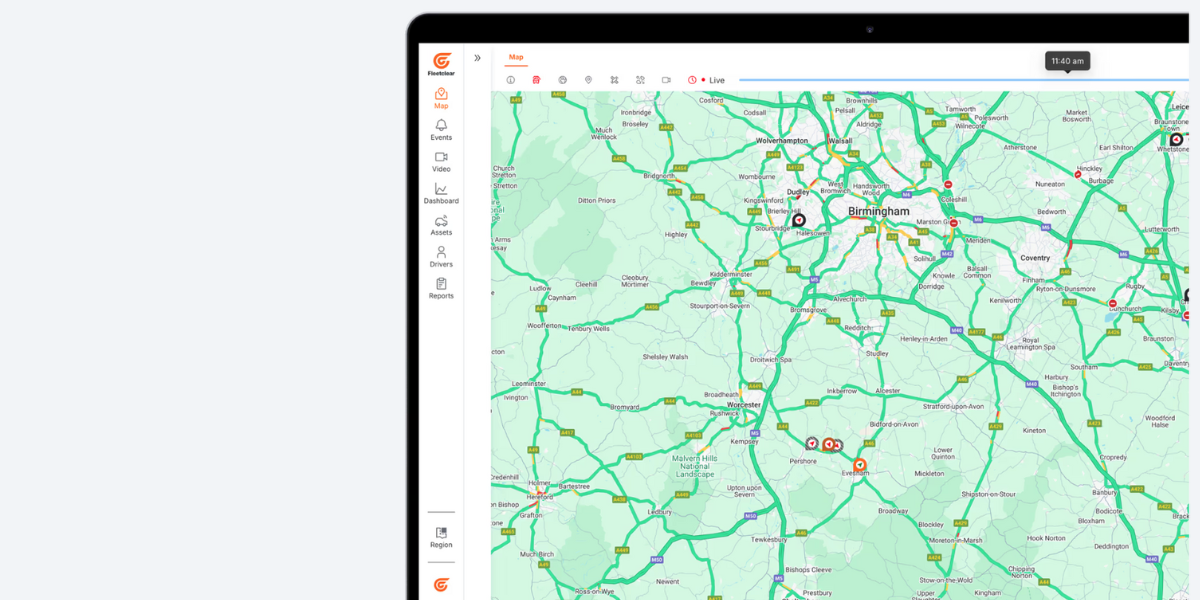Idling is eating your fuel budget: Smarter practices for construction fleets
.jpg)
On construction sites, waiting is inevitable. Vehicles queue for access, operators pause between tasks, and engines are often left running to ‘keep things moving.’ But what looks like minor downtime quickly becomes a major drain on fuel and efficiency.
A heavy vehicle idling for just one hour can burn around 2 litres of diesel. At today’s UK prices, that’s more than £1,000 wasted per vehicle each year(Link to source in next paragraph). Multiply this across multiple vehicles and job sites, and the hidden costs are staggering, with fuel waste, higher emissions, unnecessary engine wear, leading to shortened vehicle lifespans.
Without the right visibility, fleet managers can’t distinguish between essential site activity and wasteful habits. The result? Profits quietly eroded by “invisible” inefficiencies.
Why idling goes unnoticed—and why it matters
Construction operations naturally involve pauses: unloading, crew changes, or waiting for restricted access. To operators, leaving the engine running feels harmless. In some cases, such as when the Power Take-Off(PTO) is engaged to operate hydraulics, the vehicle does need to idle. But if crews become accustomed to engines running for work purposes, they may overlook when idling is not essential. An excavator idling just 40 minutes a day could waste between 440 and 1,300 litres of diesel per year (CaterpillarInc, 2022).
The challenge is visibility. Traditional logs often record engine-on time, but they can’t show the difference between productive activity and wasteful idling. As a result:
- Fuel is burned unnecessarily
- Emissions rise
- Engines suffer avoidable wear
- Delays and inefficiencies are normalised
In some cases, idling even points to off-task use, such as personal errands or misuse of equipment. Left unchecked, these behaviours become embedded as “business as usual,” with significant financial and operational consequences.

Tracking idle time with real-time telematics
To tackle the issue, managers need to see not just when vehicles idle, but why they are idling. That’s where real-time telematics makes the difference.
Metrics such as True Idle, available through Fleetclear Connect, reveal whether a vehicle was engaged in legitimate site activity or simply burning fuel unnecessarily. With this level of insight, managers can:
- Spot idling hotspots across sites and vehicles
- Compare operator performance
- Identify avoidable downtime
- Base decisions on real data, not assumptions
This visibility transforms idle time from an unseen cost into a measurable, actionable factor. Fleet managers can plan more effectively, reduce fuel waste, and keep projects on schedule.
Shaping operator habits and smarter site planning
The aim isn’t to catch operators out, but to empower them. When drivers see how their idling affects fuel costs, even small behaviour changes can deliver big results. Making data personal, linking fuel use directly to daily activity encourages responsibility and awareness.
Small changes, big results
Idling may seem like background noise on a busy site, but it’s one of the most persistent and expensive inefficiencies facing construction fleets. With telematics-led visibility and smarter planning, businesses can:
- Cut fuel costs
- Extend vehicle lifespans
- Improve on-site performance
- Reduce environmental impact
The lesson is clear: minor adjustments today lead to significant savings tomorrow.
To see how you can detect and reduce idling across your fleet, book a demo or speak to our team on +44 (0)1386 630 155.
Drive your business forward with Fleetclear.
Contact our team to book a demo and start your journey towards a safer, more efficient and compliant fleet.

